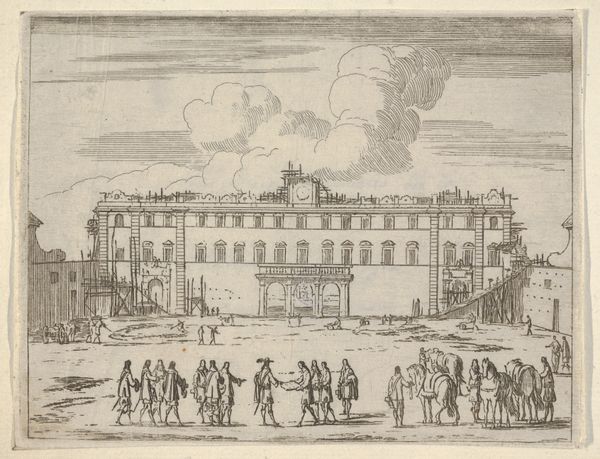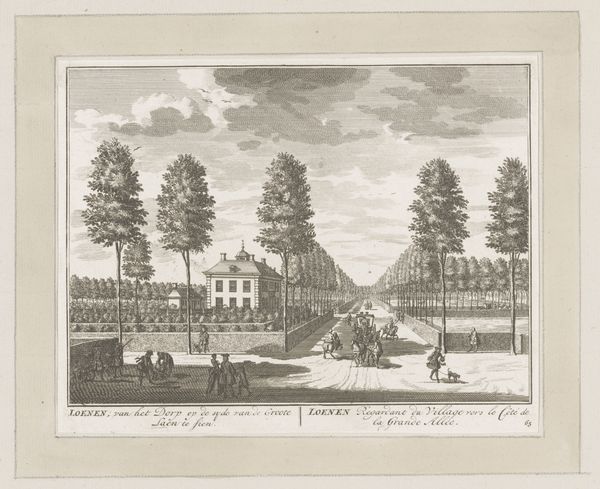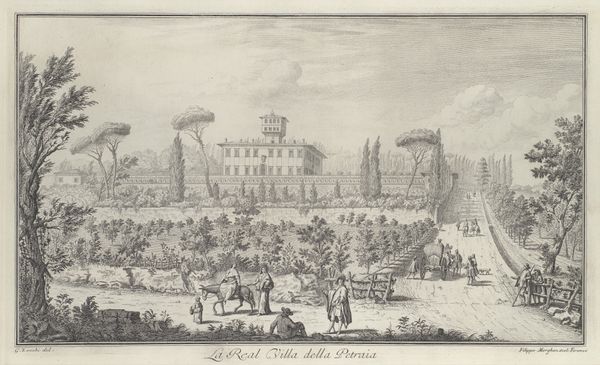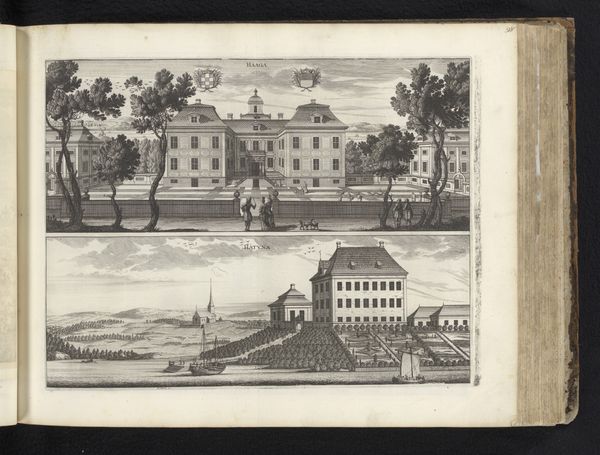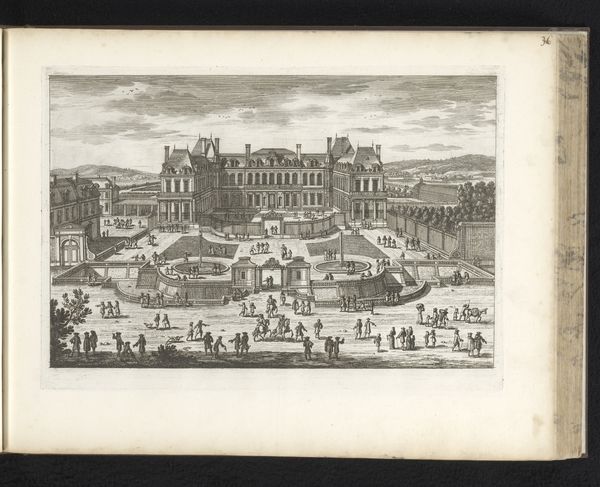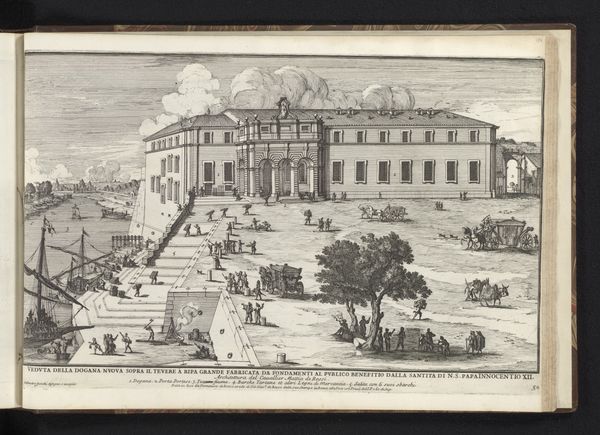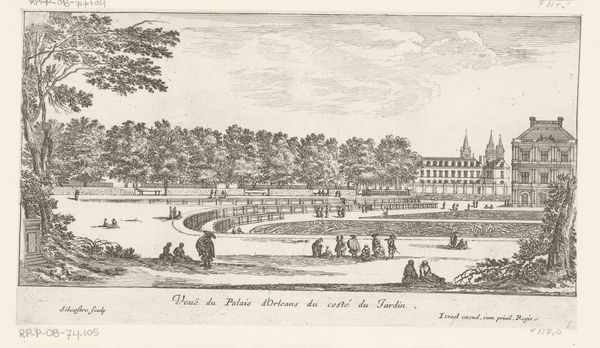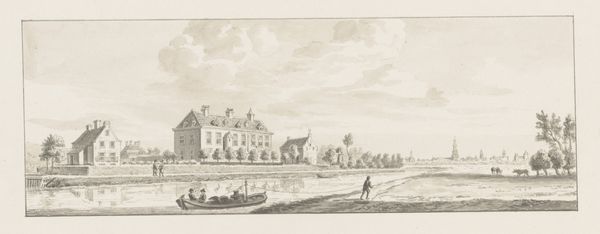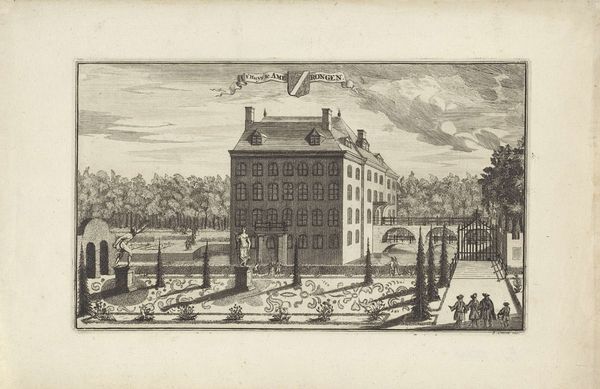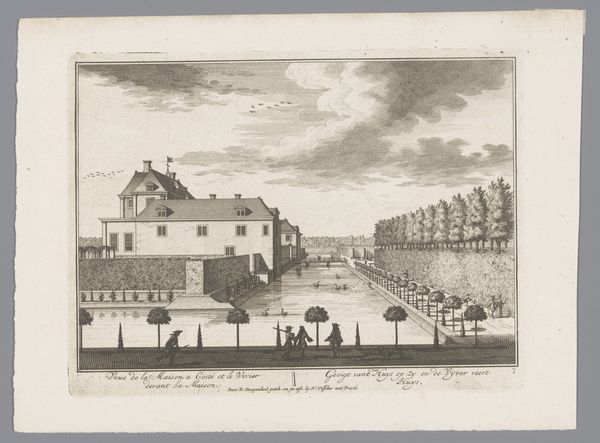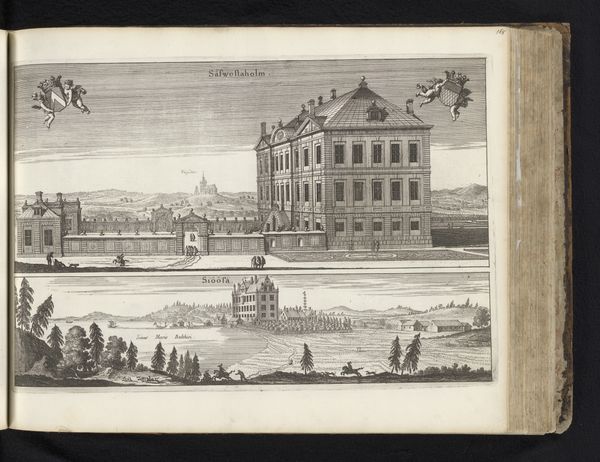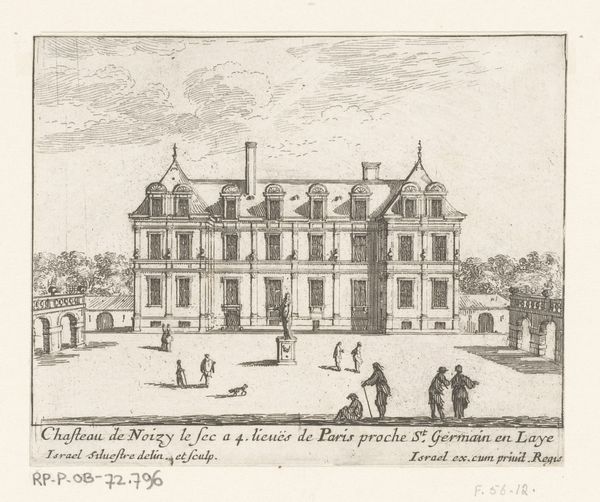
drawing, print, etching, architecture
#
drawing
#
garden
#
neoclacissism
# print
#
etching
#
landscape
#
architecture
#
building
Dimensions: Sheet: 10 1/2 × 14 5/16 in. (26.6 × 36.4 cm) Plate: 5 13/16 × 8 11/16 in. (14.7 × 22 cm)
Copyright: Public Domain
Charles Michel Campion created this print, "The Shadow of Poinsinet," in France in the 1700s, using etching. The image depicts an aristocratic household enjoying the grounds of their estate. Campion was producing this print at a time when French society was structured around a rigid hierarchy of social classes. The aristocracy, who owned vast estates and enjoyed immense wealth and privilege, were at the top. Images like this one served to reinforce the social hierarchy. They presented a vision of harmony and order in which everyone knew their place. But in another sense, this idyllic image is also ripe for satire. Are these people truly happy, or are they merely acting out a role? Is the rigid formality of the gardens a sign of control or of repression? Understanding this print involves researching the social and economic conditions of 18th-century France. By looking at period literature, political pamphlets, and other visual representations of the time, we can get a better sense of how the image participates in a broader cultural conversation about power and social class.
Comments
No comments
Be the first to comment and join the conversation on the ultimate creative platform.
